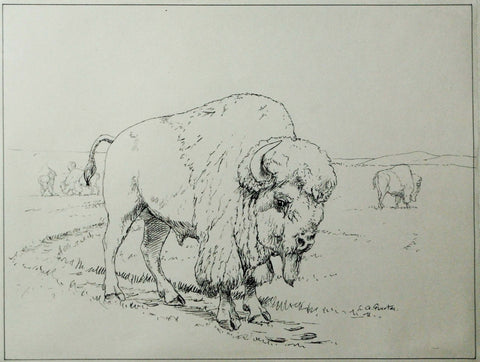Search By Artist
Louis Agassiz Fuertes (1874 - 1927)
Louis Agassiz Fuertes (1874 - 1927)
Louis Agassiz Fuertes is the most widely acclaimed American ornithological artist of his time. Born in Ithaca, New York, Fuertes began drawing birds at an early age, inspired by Audubon's Birds of America. In a letter to Frank Chapman, dated December 25, 1917, he stated: "This set was for ten years or more my daily bread. By it I was so thrilled that it melts me now to remember it." By the time he was seventeen, his illustrations had qualified him as an associate member of the American Ornithologists' Union whose active membership was limited to fifty people in the entire United States. Fuertes quickly became associated with leading ornithological scientists and artists, and he received professional commissions while still an undergraduate at Cornell University College of Architecture. Ornithology was still in its infancy and his family thought he needed an established profession to fall back on. While at Cornell, he met Elliott Coues, the uncle of a fellow student and one of the leading ornithologists of his day. Coues asked him to illustrate Citizen Bird, a children's book he was writing with Mabel O. Wright. This book alone contained 111 illustrations and by the time of his graduation Fuertes had already illustrated three books. A meeting with the artist Abbott H. Thayer was also to have a lasting influence upon the young Fuertes.
Fuertes went on to produce a vast body of work for an extremely broad range of projects. Initially, his drawings had been solely a means of ornithological study and thus, his paintings and drawings invariably convey the artist's extremely careful study of his subjects' form and behavior. His diligence, precision and skill in draftsmanship produced some of the most animated and engaging bird illustrations of the twentieth century. Fuertes was determined to study and draw birds as they behaved in their natural habitats, unlike his predecessors, including Audubon, who took the easier route of drawing from stuffed specimens. As a result of this scrupulous and sensitive study of living birds, his works are characterized by a much greater accuracy and sense of vitality. Perhaps more than any of the other great bird artists, Fuertes' birds are always full of life.
Fuertes traveled widely to broaden his knowledge of birds and their habitats. In 1899, for example, he accompanied the Harriman Expedition to Alaska, a group that traveled up the coast as far as Plover Bay in Siberia. Sponsored by the railroad and mining magnate Edward Harriman, the elaborately outfitted expedition included well-know scientists such as John Burroughs and John Muir, landscape artists Frederick Dellenbaugh and Robert Swain Gifford, and photographer Edward Curtis. Other expeditions took Fuertes to Saskatchewan and Alberta in 1907, Cape Sable and the Cuthbert Rookery of Florida in 1908, Mexico in 1910, and in 1911 and 1913 he traveled to Colombia.
By that time, Fuertes was widely acclaimed, his illustrations having been disseminated in a number of publications. Amongst these were the Handbook of Birds of the Western United States written by Florence Merriam Bailey and published in 1902, Elliot Coues' important 1903 work the Key to North American Birds; and Leonard C. Sanford's The Water Fowl Family, published in 1903. Always a shrewd businessman, Fuertes charged publishers handsomely for his illustrations, always mindful of his family's financial security. He noted in a letter to W. Leon Dawson, dated September 1916: "I have no means of support but my work, which I have spent much time and labor and study in perfecting and I do not hesitate a moment to put that fact before the publishers."

